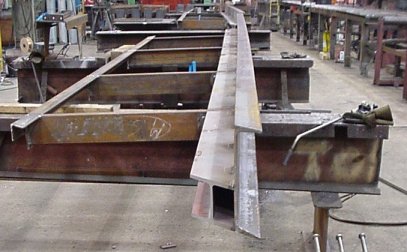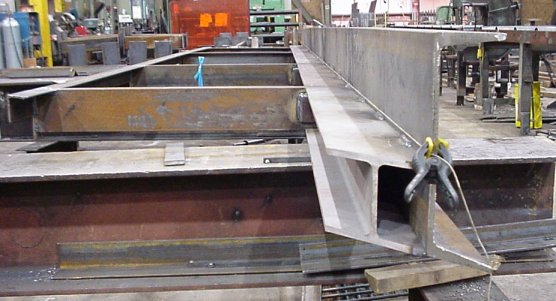
The process seems to be a black art but really is based on some basic principles. Autobody repairers are masters at shrinking light guage panels. My experience is primarily with material over 1/4 thick. Even with my knowledge I still envy those guys working with light guage because I am not familiar with all the particular tricks they use. For me they are the magicians/wizards.
The procedure goes something like this:
The term "Hot side is the short side." is a quick way to remember which way the steel will move after it is cool. Credit is due to a man named John Adolph who has extensive experience in flame shrinkage
The pictures show an example of shrinking to repair a set of four frames. The frames had developed a pronounced bend after welding was completed. The Rosebud torch can be seen on the steel horse.

What was required was a series of heats along the flanges of the large channel. The lower flange needed more heats since it was opposite the majority of the weld beads. After cooling the string showed a bow of 1/8 inch which was "good enough".

In this case wet rags were used to cool the assembly down rather than a siphon gun which might have been quicker. Two frames were shrunk at the same time, alternating heats between. Because of all the locked in shrinkage from the welding, heats every six inches along the lower flange had to be applied. Usually four heats evenly spaced over the complete length were done then let cool before applying more heats.
This large rack for holding parts was overwelded. the vertical support tubes bent resulting in all the shelf arms sloping downward before they were even loaded. The following picture shows the location s of heat applied to straighten the vertical tubes. The shelves were emptied before the shrinking began. The burned paint indicates the pie shaped locations that were heated.
It is important to understand that the air and water mist is used to increase the gradient of temperature across the heated area. It is not used for direct cooling on the red hot metal. Quenching the red area with the water spray will not aid in shrinking the metal and can affect the strength and ductility in some cases.